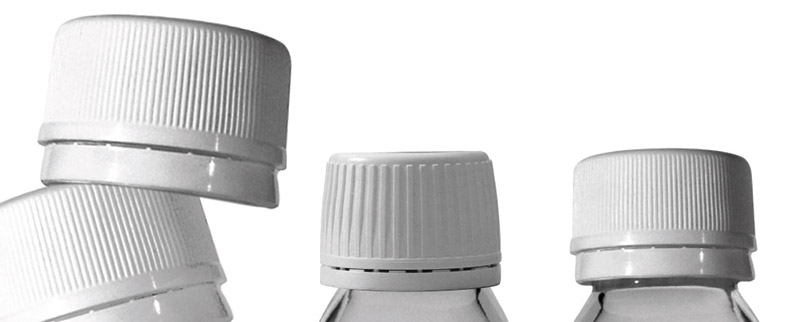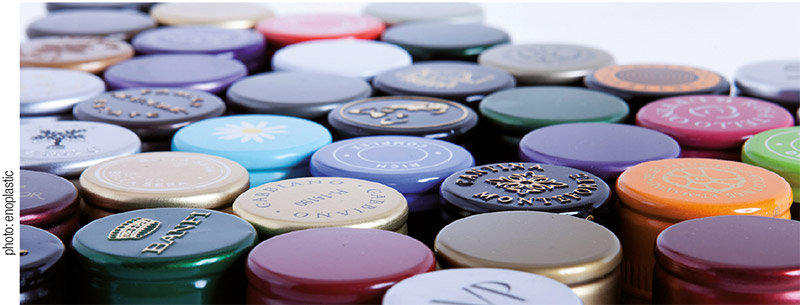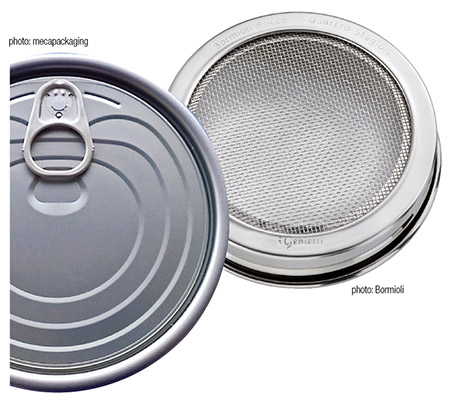The closures market
They are part of the area of packing accessories and are indispensable in the process of preservation and transportation of products that, thanks to them, remain intact and well preserved. We are speaking of closures, an area varied both in terms of types and in terms of materials: data on production and use.

photo:capsulit
The DL. N. 152 art. 218 gives the following definition: «Packaging: product consisting of materials of any nature, used to contain certain goods, from raw materials to finished products, to protect them, to allow their handling and their delivery from the producer to the consumer or user, to ensure their presentation, as well as the disposable articles used for the same purpose».
Packaging components and ancillary elements are considered integral parts of the same. The ancillary elements directly fixed or attached to the product, such as closures are to be considered packaging in all respects.
The world of closures is very broad, and can be primarily segmented in terms of the materials used for their manufacture but subsequently also by type. According to the data processed by the Istituto Italiano Imballaggio in 2017 approximately 189,000 tons of closures were produced to a value of about 890 million euros. In terms of weight closures represent about 1.2 percent of the packaging sector total, while they account for 2.7% in value.
Segmentation by material
Analyzing the closures sector in terms of tons, plastic closures account for 56.3% and are broadly used on the market, and are made using relatively light materials. These are followed by steel closures (32.3%). Aluminium closures account for 9.1% of the sector, followed by corks (2.3%). Lastly, there is also a minute percentage of closures made of glass (0.01%), used exclusively in the field of alcoholic beverages in some limited instances of premium packaging.
Segmentation by type
• Plastic closures. In 2017 these reached 108 t/000 and are divided into capsules for bottles and jars, tops for bottles or rigid laminated containers mainly made of paper, tube closures.
Plastic closures also cover the thin sheet applied and sealed to the edges of tubs and trays used mainly in the food sector for packaging cold cuts, fresh meat and fish, cheeses, fresh pasta etc. and where it performs the function of closure to all effects. In the non-food sector the thin sheet is often used for packaging printer cartridges or else in the field of toys.
Based on the processing of the Istituto Italiano Imballaggio database, plastic caps for bottles alone account for 52% of plastic closures, while capsules for jars and bottles account for a further 40% of the segment. This category includes bottle closures (for domestic cleaning products, assorted chemical products, etc.), food jar capsules (spreads, sauces, vegetable preserves, etc.) as well as closures for the cosmetics and pharmaceutical sectors.
The segment also includes bottle closures with incorporated dispensers found mostly in the home detergents sector (spray detergents, rechargeable bottles, etc.) but also in the cosmetics and pharmaceutical sectors.
Tube closures account for around 4%, likewise plastic films for trays and tubs.

• Steel closures In 2017 these stood at 61 t/000. This category includes screw caps (49% of the total), mainly used to close glass jars.
Crown caps account for 19%, mainly used on glass bottles for beer, soft drinks and mineral water.
The open top easy open lids directly crimped to the can body are also part of the steel closures category, and make up the remaining 32%.

• Aluminum closures. As for the 17 000 t/produced in 2017, these are spread out in various ways over different sectors.
A full 60% of the total is accounted for by screw closures for mineral water-, spirits and olive oil bottles but in recent years some brands of carbonated beverages have introduced screw closures in place of crown caps. Use is also made of them in the cosmetics sector.
The thin sheet of aluminium used for closing the yogurt cups, single serve packs of honey or jam, etc. make up 21% of the total: Next in the list are screw capsules (10%), used for example for baby foods or cosmetics, and finally the easy open closures used for canned food account for 9%.
• Corks. The 4.3 t/000 produced in 2017 are used almost exclusively in the field of alcoholic beverages, with a clear predominance in the wine and sparkling wine areas (93%).
The remaining 7% is divided between corks used for spirits bottles (6.9%) and the cork closures applied on some glass jars used for gift packs of salts or spices (0.1%).
Barbara Iascone
Istituto italiano Imballaggio

















